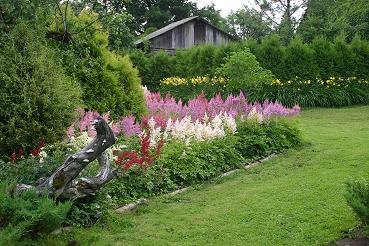This personal report on the visit by the Society to Finland and Estonia in July/August 2005, covers Day One of Part 2 – Estonia.

The Market Square, Tallinn

Tallinn is the capital of Estonia. The old town dates from the 13th century and reflects many architectural styles. One could easily spend a few days wandering around the narrow cobbled streets, made all the more pleasant by being traffic free. The huge market square draws many people, especially the tourist who flock to the town during the day, and the restaurants and bars around the square make the most of this opportunity.

But you only have to go a street or two away and you start to see the real Tallinn – old buildings beautifully restored, interesting shops selling locally produced goods and souvenirs at very reasonable prices, and small bars and restaurants where you can get first class food without out paying first class prices. We particularly liked a coffee shop we found on a previous visit, a few minutes north east of the square, with beautifully made, very fresh cakes and pastries and freshly made tea or coffee at ridiculously low prices. And it was still there, it still had wonderful cakes, and was still a bargain.
We stayed a couple of kilometres or so outside of Tallinn and conveniently next to the International Airport in the Hotel Ülemiste, a very comfortable modern hotel less than one year old. In spite of the location – walking distance of the Airport Terminal – one was totally unaware of aircraft, so good was the soundproofing. We all met up at the briefing in the hotel in the late afternoon, which gave the perfect opportunity to meet and greet those who had not been able to be with us in Finland.


Thursday was our first day of visits and we started with the garden of Heino Kala in Tapa. Heino has been growing clematis for some 30 years or more and breeding them for more than 20 years. You will find a number of his cultivars described in The International Clematis Register and Checklist 2002. His newer cultivars include C. ‘Alo’, C. ‘Lumivalgeke’, C. ‘Iti’, C. ‘Õie’, C. ‘Epp’ and C. ‘Aal’.

His garden was neat, tidy and full of clematis – including but not exclusively stocked with some of his own cultivars. Heino must spend a lot of time in the garden because beyond the immediate flower beds and rows of clematis was a large vegetable and fruit area, full of health looking produce. But he is a man of many talents, including engineering, as we found out when he proudly showed us his electro/magnetic seed germination equipment. Treating seeds in the way, Heino said that germination is speeded up very significantly. I hope to publish further details plus the results of experiments by some of our members in next years journal.

Late morning we left Heino and his family and travelled out to northern Estonia to an area known as Kõrvemaa, famous for it’s forest and bogland and the wildlife that thrives in this habitat. Starting at the Nature Centre, used particularly by local schools to educate children in the nature of Estonia, we had a very pleasant ramble along a well marked path and boardwalk through the habitat. As we walked, so our guide pointed out the many native plants that are found in the area. Back at the Centre, we saw how many of the plants can be used for medicinal purposes.

After all this fresh air and exercise, we were all ready for the lunch arranged for us in the converted stables of the Jäneda estate. Then it was off again for another garden, that of Irma Tungal and Aksel Kurt. I say garden but it’s more like a small estate.

They are both landscape designers and architects and they use their garden to demonstrate their skills with plants and landscaping. It comprises a series of different areas or “rooms”, each one showing off different aspects of garden design.
One of the things that struck me as we wandered about was the sense that the garden seemed never ending. You thought you’d got to the end, then around the corner was yet another “room”.
They may not have had many clematis, but they certainly have an eye for natural planting and variety.


Our dinner this evening was at the old farm, Mustjõe Kõrtsitalu, situated in the middle of forest. There appeared to be a small number of rare breed animals in enclosures around the main farm courtyard, which contained a fine collection of old wooden buildings, and a large covered seating area where dinner was served and where, after dinner and to the sound of Estonian folk music played by an accordionist, we danced the evening away. There were also some interesting wooden structures in the courtyard, including a multiperson swing, the cause of much laughter when, in spite of light drizzle of rain, a number of our members decided to see just how high the swing would go!

I leave you with a group photo taken in the garden of Irma Tungal and Aksel Kurt. Being concerned that the fine weather might not last, we took the opportunity of a nice wide lawn to assemble everyone – or at least most of the group. There are always one or two who just HAVE to go and look at just one more plant!

Please follow these links to go forward to Day Two or Day Three, or return to Part 1 – Finland, Day One, Day Two or Day Three